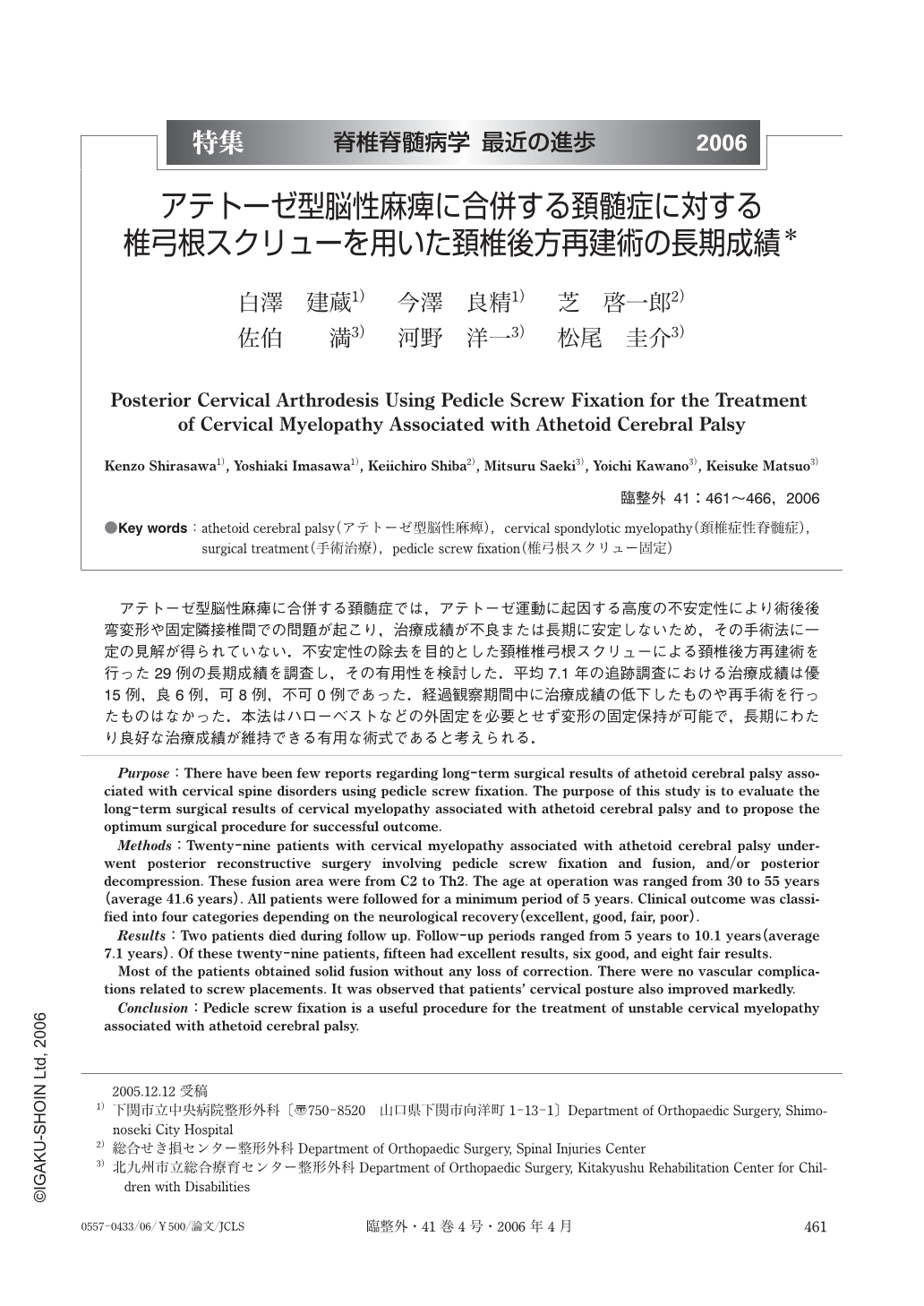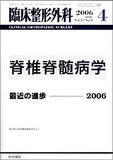Japanese
English
- 有料閲覧
- Abstract 文献概要
- 1ページ目 Look Inside
- 参考文献 Reference
アテトーゼ型脳性麻痺に合併する頚髄症では,アテトーゼ運動に起因する高度の不安定性により術後後弯変形や固定隣接椎間での問題が起こり,治療成績が不良または長期に安定しないため,その手術法に一定の見解が得られていない.不安定性の除去を目的とした頚椎椎弓根スクリューによる頚椎後方再建術を行った29例の長期成績を調査し,その有用性を検討した.平均7.1年の追跡調査における治療成績は優15例,良6例,可8例,不可0例であった.経過観察期間中に治療成績の低下したものや再手術を行ったものはなかった.本法はハローベストなどの外固定を必要とせず変形の固定保持が可能で,長期にわたり良好な治療成績が維持できる有用な術式であると考えられる.
Purpose:There have been few reports regarding long-term surgical results of athetoid cerebral palsy associated with cervical spine disorders using pedicle screw fixation. The purpose of this study is to evaluate the long-term surgical results of cervical myelopathy associated with athetoid cerebral palsy and to propose the optimum surgical procedure for successful outcome.
Methods:Twenty-nine patients with cervical myelopathy associated with athetoid cerebral palsy underwent posterior reconstructive surgery involving pedicle screw fixation and fusion, and/or posterior decompression. These fusion area were from C2 to Th2. The age at operation was ranged from 30 to 55 years (average 41.6 years). All patients were followed for a minimum period of 5 years. Clinical outcome was classified into four categories depending on the neurological recovery (excellent, good, fair, poor).
Results:Two patients died during follow up. Follow-up periods ranged from 5 years to 10.1 years (average 7.1 years). Of these twenty-nine patients, fifteen had excellent results, six good, and eight fair results.
Most of the patients obtained solid fusion without any loss of correction. There were no vascular complications related to screw placements. It was observed that patients' cervical posture also improved markedly.
Conclusion:Pedicle screw fixation is a useful procedure for the treatment of unstable cervical myelopathy associated with athetoid cerebral palsy.

Copyright © 2006, Igaku-Shoin Ltd. All rights reserved.


